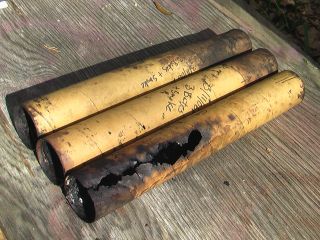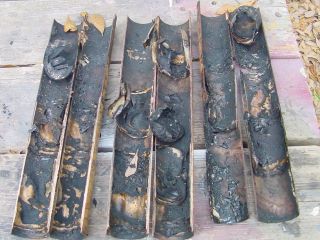March 11, 2006
Paper nose cone gets a real test
Or two...
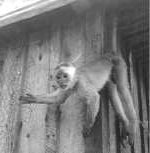
| NEFAR Launch March 11, 2006 Paper nose cone gets a real test Or two... |
 |


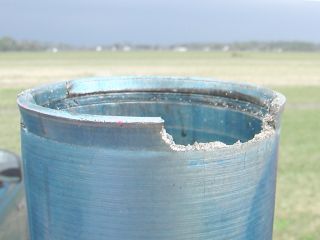
| Designation: | 3/11/06A |
| Motor casing: | Loki 1600 4-grain 54mm. |
| Propellant: | Recrystallized KN/sucrose made with electric skillet method |
| Grains: | 3 BATES grains, average length 3.5 inches, propellant diameter 1.77 inches |
| Grain core: | 0.63 inch |
| Web Thickness: | ((1.77 - 0.63) / 2) = 0.57 inches |
| "Smoke" grain | at head end, 2 inches long, inhibited at top end with disk of 3/32 inch thick basswood, covered with epoxy, cardstock, and 1 layer Nashua 322 foil tape. Depth of smoke composition is 1.91 inches. |
| Nozzle: | New Loki nozzle, 0.435 inch throat |
| Kn ratios: | Initial: 227 Maximum: 281 Final: 266 |
| Max pressure: | 952 psi (BurnSim) |
| Ignitor: | Bridge wire wrapped in fuse paper. Tiny bit of black powder rolled next to the bridge wire to ensure ignition with the 12 volt system, and a little Ti sponge sprinkled on the paper for extra heat. Wrapped with masking tape. |
| Total propellant mass: | 664 grams (assuming header grain burns as intended, 751g if my suspicions are founded) |
| Total mass at liftoff: | 154.4 oz. (= 4.377 kg = 9.65 lbs) |
| Airframe: | 3 inch diameter PML Quantum Tube, body tube 54 inches long. Conical nose cone made from paper, PVC fittings and fiberglass, and containing altimeter. 610 gram sandbag ballast added to payload section to ensure stability. |
| Coefficient of Drag: | 0.26 at 300 fps (RocCAD) |
| Total liftoff weight: | 154.4 oz ( = 9.65 lbs = 4.377 kg ) |
| Ejection: | Using PML Co-Pilot, adapted to fit in the nose cone. Set to fire in redundant mode, both matches to fire at apogee 1 second apart. |
| Ejection charge: | 2.6 grams of Red Dot sealed in a cardboard pouch with 2 Christmas-tree e-match heads. |
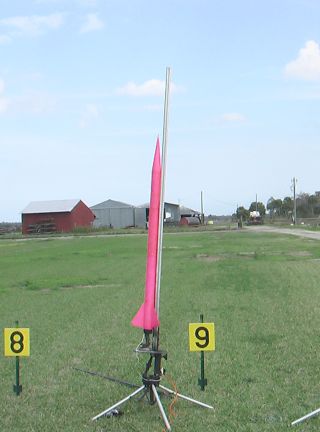 |
Videos of this launch: Short, boost only, 3 meg .wmv file. 25 seconds of video
Another short video of the boost taken by Jon Barnhart, 2 meg .wmv file, 9 seconds if video Longer, Boost to touchdown with a little drama, 8 meg .wmv file, 97 seconds of video |
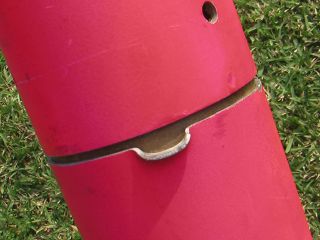
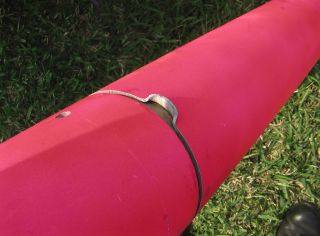

| Event | Time |
| First ignition smoke | 0 |
| Liftoff | 0.734 second |
| Motor burnout | 1.8 seconds |
| Smoke burnout | 5.4 seconds |
| Ejection sound heard | 11.3 seconds |
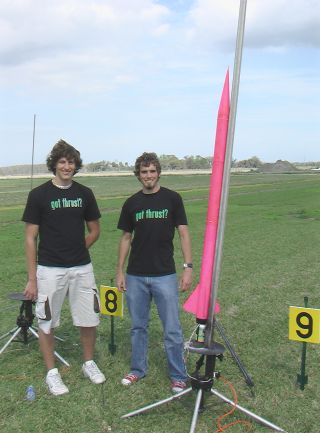 |
Videos of this launch: Short, boost only, 2 meg .wmv file, 18 seconds of video
Another short video of the boost taken by Jon, 1 meg .wmv file, 6 seconds of video Long, Boost to touchdown, 7 meg .wmv file, 85 seconds of video |
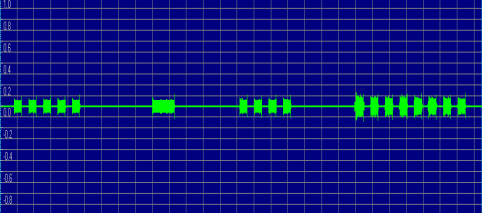
| Designation: | 3/11/06C |
| Motor casing: | Loki 1600 4-grain 54mm. |
| Propellant: | Recrystallized KN/sucrose made with electric skillet method |
| Grains: | 2 moonburner grains, average length 4.3 inches |
| Grain core: | 0.63 inch, flared to 1 inch at nozzle end |
| Web Thickness: | (1.77-.63) = 1.14 inches |
| "Smoke" grain | at head end also provides some thrust. It is 4 inches long, with 1 inch deep moonburner core, aligned with the cores of the primary boost grains. The header grain adds 60g to the propellant load, plus another 39g for the forward burn into the header during the boost phase. Thus it is assumed that 2.14 inches of this grain will be consumed during the high-pressure "boost" phase of motor operation. the remaining 1.86 inches will burn at the 1atm speed of 11 seconds per inch. That should provide a smoke trail for 20 seconds after motor burnout, enough to get it to apogee and then some. We shall see.... |
| Nozzle: | Almost-new Loki nozzle, estimated to have 0.447 inch throat* |
| Initial Kn: | 194 (highly regressive thrust curve, tapering off to nothing in 2.5 seconds) |
| Max pressure: | 555 psi (BurnSim) |
| Ignitor: | Bridge wire with fuse paper, BP and Ti, as above. In addition, a 2 inch long strand of black match inserted in the head-end grain's short core, and 2 square inches of rich fuse paper packed in to hold it in place. This is to ensure that the far end of that core gets ignited right away. |
| Total propellant mass: | 603 grams (assuming header grain burns as intended, 755g if my suspicions are founded) |
| Total mass at liftoff: | 154.4 oz. (= 4.377 kg = 9.65 lbs) |
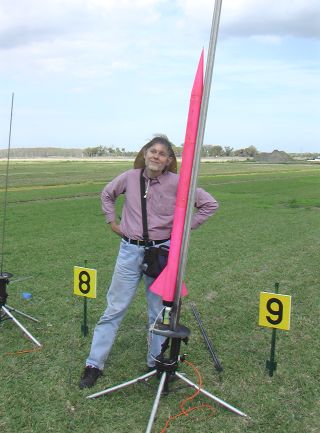 |
Videos of this launch: |
